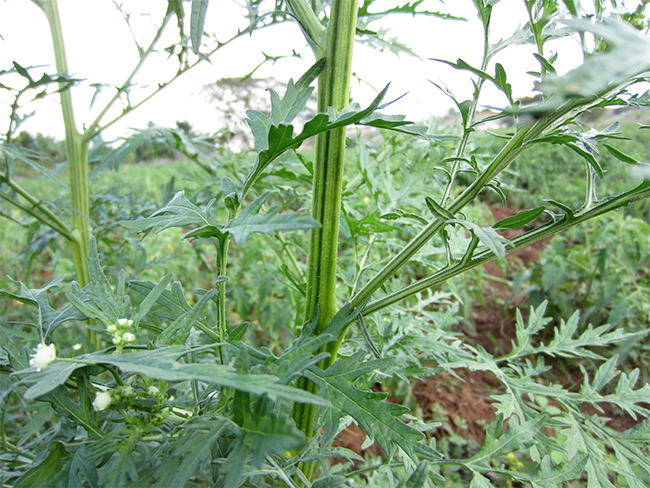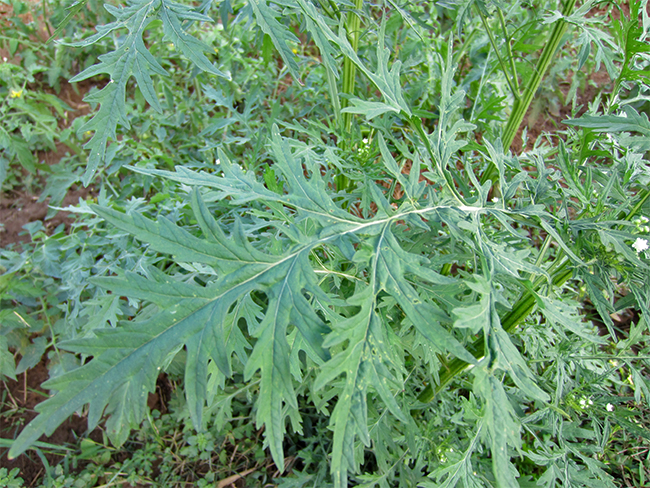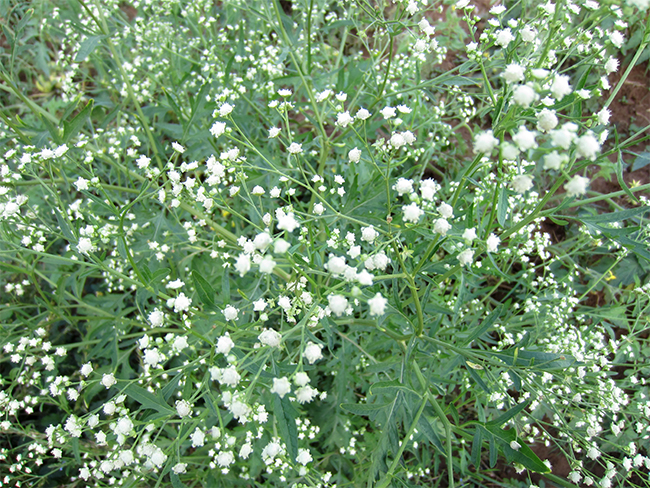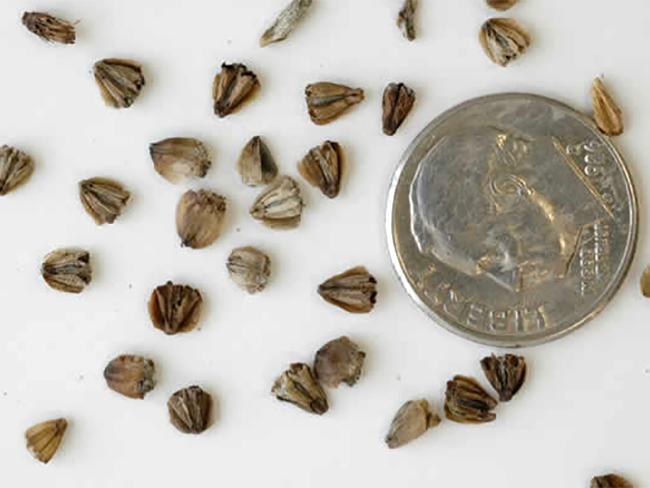Parthenium weed
Scientific name: Parthenium hysterophorus
Declaration status: Class A
An infestation of parthenium weed was detected in the Katherine region in October 2018.
Weed management officers are assisting the landholder to control and eradicate the weed.
If you have seen parthenium weed or think you have it on your property, you should contact the Katherine Weed Management Branch.
Parthenium weed is a Weed of National Significance. For more information, go to the Australian Government's Department of Environment website.
Parthenium weed is a native of Central and South America.
It was first recorded in Australia in 1955, and has become well established in central and southern Queensland.
It is regarded as one of the worst weeds in Australia because of its invasiveness, potential for spread and environmental and economic impacts.
Past infestations
In 1977, parthenium weed was discovered in the Northern Territory (NT) along Elsey Creek in the Mataranka district. The infestation had spread 8km downstream from the Roper Highway.
The Weed Management Branch conducted an intensive eradication program which was successful.
Smaller infestations have been reported and eradicated in the Katherine and Borroloola regions and the Victoria River district.
Parthenium weed was also found and eradicated at the Tennant Creek stockyards in 2010.
Impact
Parthenium weed is a major problem in rangelands and cropping areas of Queensland costing farmers and graziers more than $22 million a year in reduced production and increased management costs.
Parthenium weed can have all of the following impacts:
- degrades pastures, increasing production costs and decreasing productivity
- toxic to stock and humans
- can cause allergic skin reactions in people that may take up to 20 years to show
- taints meat from livestock that eat it.
Identification
You should use this as a guide. There may be other plants or weeds that look similar.
- fast-maturing, branching annual herb, erect stem up to 2m high
- becomes woody with age
- pale green, lobed leaves covered with soft, fine hairs
- small, white flowers grow on the stem tips 4mm across with five distinct corners
- each flower produces four or five seeds
- seeds are black and wedge-shaped 2mm long with thin white scales.
View 3D interactive models of this weed's seed, rosette and full plant below.
© Regional NSW through NSW DPI Invasive Species Biosecurity
Model created by Rachel Klyve
To find out more, get the parthenium weed note on the Department of Lands, Planning and Environment website.
If you are unsure, contact the Weed Management Branch.
Control
If you think you may have seen parthenium weed, or have this weed on your property, do not attempt to control it.
Contact the Weed Management Branch immediately for assistance.
Spread
Parthenium weed can spread rapidly if introduced into an area.
It produces large quantities of seeds that can contaminate hay, vehicles, machinery and livestock. All of these can accidentally spread parthenium weed.
Spread prevention
Vehicles and produce coming from areas in Queensland that are affected by parthenium weed should be checked and/or cleaned before entering the NT and individual properties.
Wash down areas should be closely monitored for parthenium plants.
Give feedback about this page.
Share this page:
URL copied!




